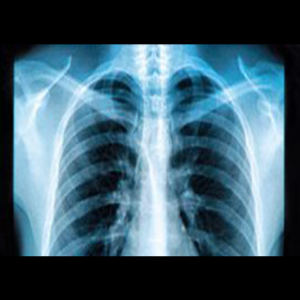

Carbon Nanotube Technology for X-Ray Machines

Advancements in medical imaging technology have significantly improved healthcare diagnostics and treatment. One such innovation that has been turning heads is the cutting-edge carbon nanotube technology developed by Micro-X for their X-Ray units including their flagship Rover X-Ray machine. In this blog, we will explore how this groundbreaking technology is transforming the field of medical imaging and revolutionizing the way we visualize the human body.
What are Carbon Nanotubes
Carbon nanotubes are tiny, cylindrical structures made of carbon atoms arranged in a unique lattice pattern. The resemble graphene sheets rolled up. They have unique thermal and electrical properties which make them excellent conductors along the length of the carbon nanotube and resistors along the width. This property allows the carbon nanotubes to work as field emitters which means that under the right conditions with an electric field applied – they can release electrons from their tips into a vacuum. This component of the X-Ray tube is called the emitter and it replaces the tungsten filament found in traditional X-Ray tubes.
When compared to current X-Ray tubes, they present some exciting possibilities. Some key differences between the two are that carbon nanotubes can produce electrons with a much narrower and more controllable energy spectrum, carbon nanotube X-Ray tubes can be miniaturized, and they do not require the high voltages that tungsten filaments need to produce electrons. Traditional X-Ray machines rely on bulky, vacuum-sealed glass X-Ray tubes which, although effective, have limitations that hinder their versatility, portability and service life.
Enter Carbon Nanotube Technology
The use of carbon nanotube technology addresses the shortcomings of conventional X-Ray tubes. The heart of their innovation lies in the carbon nanotube emitter. Instead of relying on hot filaments to generate electrons, carbon nanotubes employ field emission electron sources. When a voltage is applied, electrons are emitted from the carbon nanotubes, creating a focused electron beam that interacts with a target material, producing X-Rays. This means instant electrical switching on and off, no waiting for filaments to heat up, no bulky oil baths to cool cathodes, no high voltage cathodes, no filament that burns out and controllable focal spot sizes for imaging.
Unprecedented Advantages
Miniaturization and Portability: By using carbon nanotubes, X-Rays systems have a significant reduction in size and weight compared to traditional X-Ray machines. These advancements pave the way for mobile X-Ray machines that can be easily transported to point-of-care scenarios, enhancing access to medical imaging where it is needed most.
Faster Imaging and Lower Dose: Carbon nanotube technology enables rapid electron emission, reducing the time required for X-Ray production. Additionally, the process allows for precise control over the electron beam, leading to enhanced image quality and reduced radiation exposure for patients and healthcare professionals alike.
Energy Efficiency: Conventional X-Ray machines consume substantial amounts of power to operate the tubes since high voltage is needed on both the anode and the cathode. In contrast, carbon nanotube technology is more energy-efficient, making X-Ray machines not only environmentally friendly but also cost-effective.
Versatility: The Micro-X Rover provides an excellent example of how carbon nanotubes allow for higher versatility in the imaging world. The compact nature of carbon nanotube X-Ray machines allows for the rapid and maneuverable deployment of X-Ray machines in various medical settings, from emergency rooms to field hospitals and rural clinics. Furthermore, the technology’s agility facilitates imaging in challenging positions and environments, offering medical professionals greater diagnostic flexibility.
The pioneering work with carbon nanotube technology for X-Ray machines is nothing short of groundbreaking. These efforts have pushed the boundaries of medical imaging, making X-Ray machines more compact, energy-efficient, and versatile than ever before. As this technology continues to evolve, we can look forward to improved access to high-quality medical imaging worldwide, ultimately leading to more accurate diagnoses, better patient outcomes, and a healthier global population. The future of medical imaging is here, and it’s powered by carbon nanotubes.

